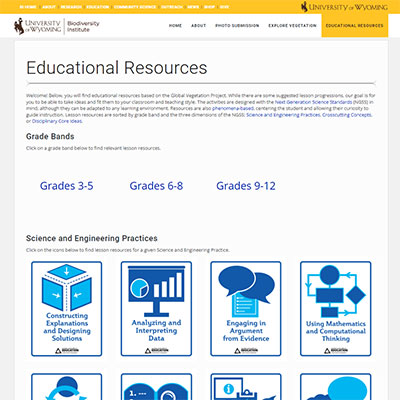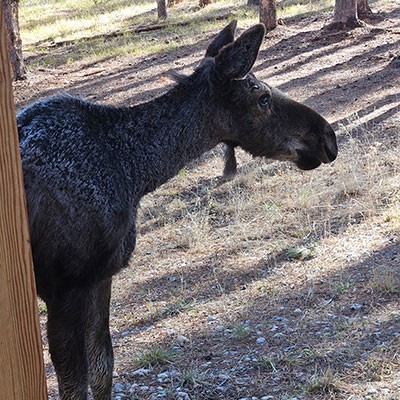UW’s Global Vegetation Project Develops Online Educational Materials
The Global Vegetation Project, started in 2020 by the University of Wyoming Biodiversity Institute, recently published K-12 educational materials on its website.
The Global Vegetation Project was developed to fill a need for more resources to teach vegetation ecology online. The vision for this project is to curate a global database of open access vegetation photos that can be used by educators around the world.
“We realized that, while K-12 educators were interested in using the platform, they were constrained by curricular demands,” says Matt Bisk, a second-year UW master’s student at the Biodiversity Institute who helped develop the educational materials for the website. “These educational materials are designed in alignment with the Next Generation Science Standards (NGSS) and are readily adaptable for educators to use them in their classrooms.”
The educational materials that were designed are grounded in phenomena-based learning, in which students are presented with a natural, observable phenomenon and are tasked with explaining why it occurs. Through explaining a given phenomenon, students explore various scientific practices and topics. In each set of materials, the Global Vegetation Project serves to introduce or explain a phenomenon.
This approach is student-centered and guided by student inquiry, says Bisk, who is pursuing a degree in natural science education and environment and natural resources. While these materials outline a general progression for an educator to follow, the materials encourage educators to allow students to drive the direction of their learning. The materials are presented so that they can be adapted to any educator’s particular teaching style and classroom.
“We believe these materials are relevant for educators in any setting, whether they teach with NGSS or are simply looking for a new, innovative way to teach topics in ecology,” says Bisk, from Mount Laurel, N.J. “It is our hope that the Global Vegetation Project is able to bring vegetation ecology into classrooms in a manner that was not previously accessible.”
The mission of the Global Vegetation Project is to inspire and empower people of all ages to learn about the diversity of vegetation on Earth and to provide educators with a resource for teaching online. The goal is to bring the field into the classroom in a way that was previously impossible, enabling visual and interactive experiences that link vegetation and climate at the global scale.
For more information about the Global Vegetation Project, go to the website at www.gveg.wyobiodiversity.org; Facebook at www.facebook.com/GlobalVegProj/; Twitter at www.twitter.com/GlobalVegProj; and Instagram at www.instagram.com/globalvegproj/.
Share This Post

Social Media
Latest News



Archives
- All
- October 2025
- August 2025
- July 2025
- June 2025
- May 2025
- April 2025
- March 2025
- February 2025
- January 2025
- November 2024
- October 2024
- September 2024
- August 2024
- July 2024
- June 2024
- May 2024
- April 2024
- March 2024
- February 2024
- January 2024
- December 2023
- November 2023
- August 2023
- July 2023
- April 2023
- September 2022
- August 2022
- July 2022
- June 2022
- May 2022
- April 2022
- March 2022
- February 2022
- January 2022
- December 2021
- November 2021
- October 2021
- September 2021
- August 2021
- May 2021
- April 2021
- March 2021
- October 2020
- August 2020
- July 2020
- January 2020
- March 2019

